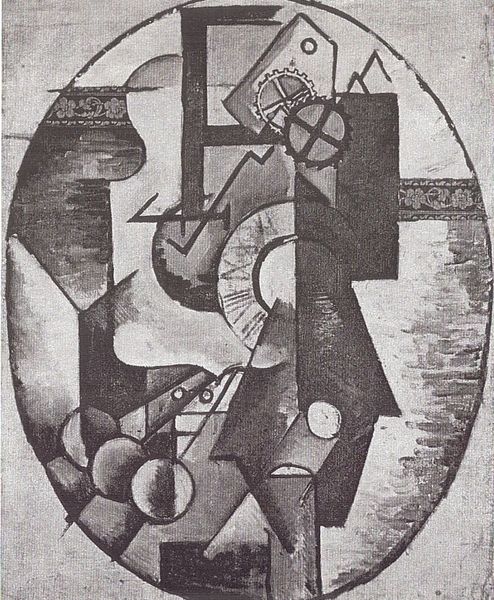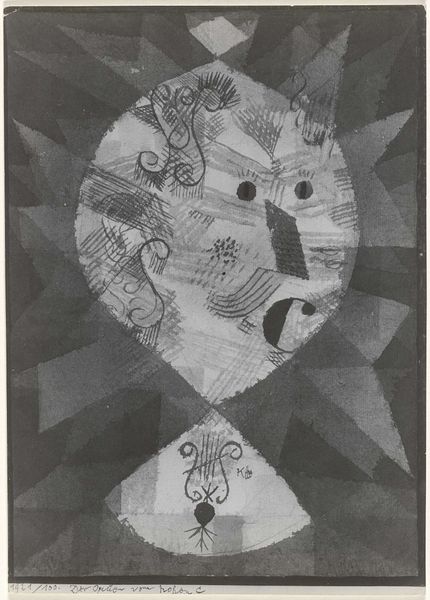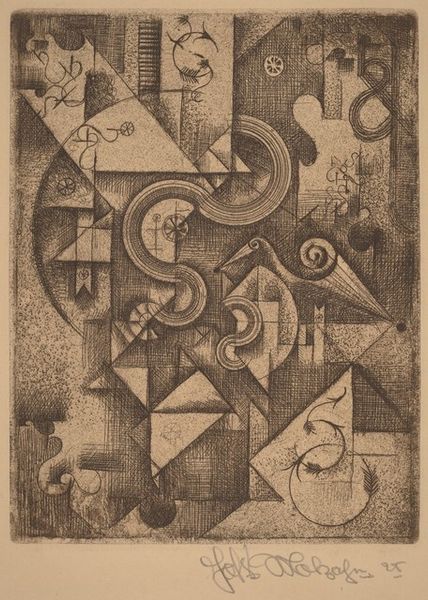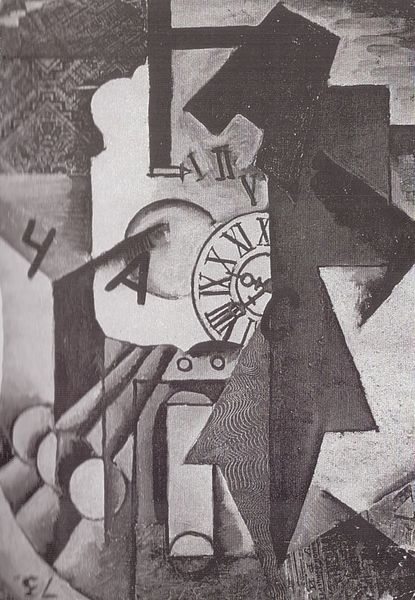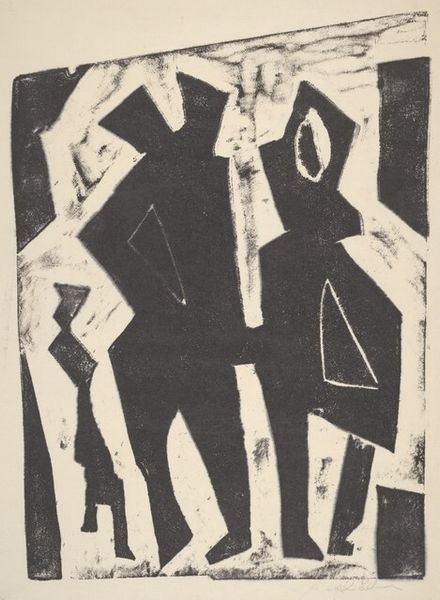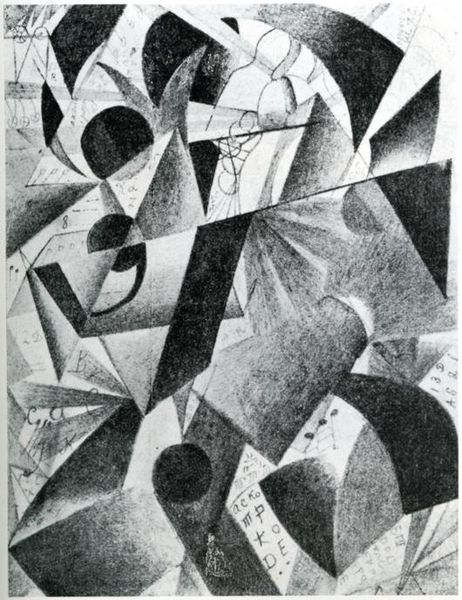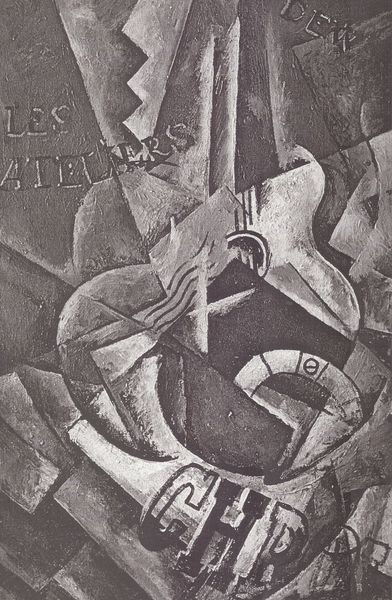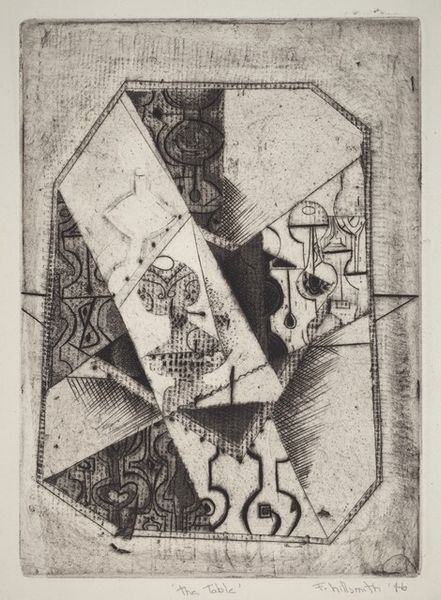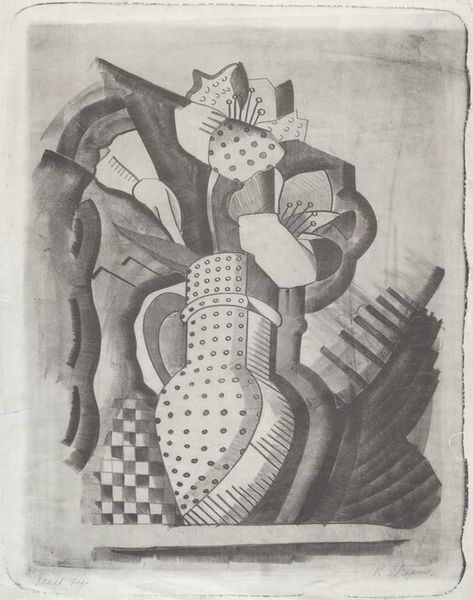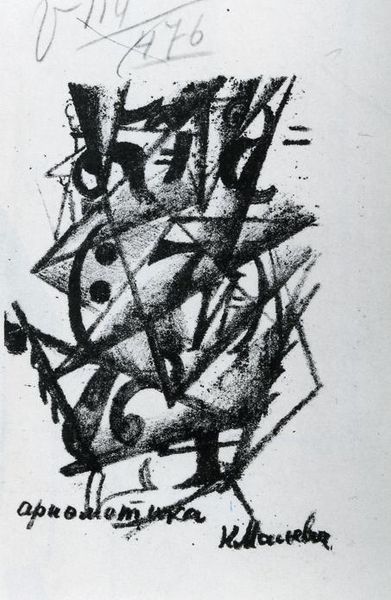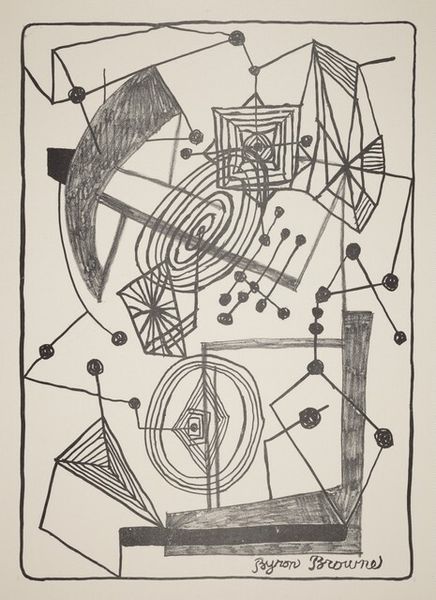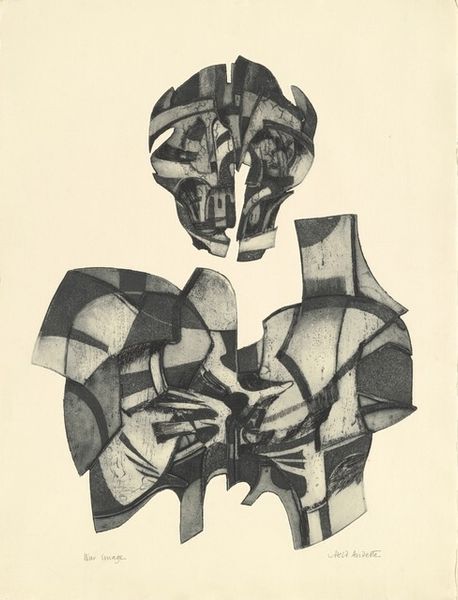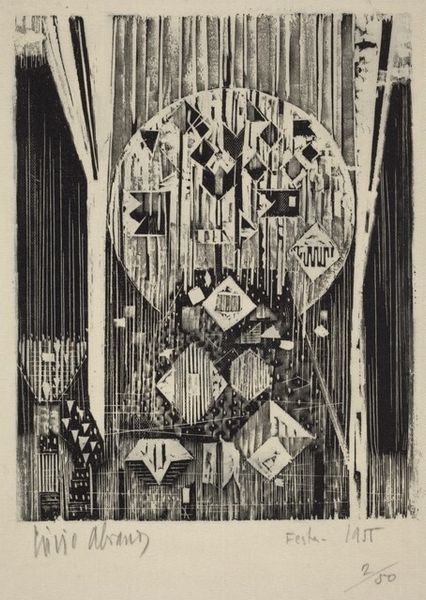
drawing, mixed-media, collage, paper, typography, graphite
#
drawing
#
cubism
#
mixed-media
#
collage
#
constructivism
#
paper
#
typography
#
pencil drawing
#
geometric
#
abstraction
#
graphite
#
russian-avant-garde
Copyright: Public domain
Curator: Here we have Lyubov Popova’s "Clock," created in 1914. It's a mixed-media work that combines drawing and collage on paper, showcasing elements of both Cubism and Constructivism. Editor: Oh, my goodness. It looks like time exploded. There’s a kind of beautiful chaos happening, with the fragments of the clock floating around, it’s almost unnerving! Curator: Precisely. The geometric shapes and fragmented imagery dismantle the traditional representation of time. Note how she integrated typography and elements suggesting cogs or clock mechanisms, breaking down the object into constituent forms, reminiscent of Analytical Cubism. Editor: There is this deep melancholic mood that feels almost like witnessing a memory slip away... like grasping for grains of sand that just slide through your fingers... Maybe it's the monochromatic palette. It drains away vitality or any hope that could possibly get into this work! Curator: The use of black, white, and grey contributes to a sense of austere industrial modernism, it emphasizes form and structure. Look closely at the newspaper clippings and other textual fragments interspersed throughout the composition. Their inclusion offers socio-political contextual layers, anchoring it within a specific moment. Editor: I notice the little circles, could they symbolize beads on an abacus? They seem oddly hopeful amidst this clock-pocalypse, injecting a bit of whimsy into all that cold deconstruction! Curator: An interesting proposition, indeed! However, their presence can also denote atomic units as well, underscoring how time could be conceived not only on macroscopic scales, but also across minuscule fragments and divisions. Ultimately, the function they play remains polysemous. Editor: True, the symbolism feels wonderfully ambiguous, like catching snippets of a forgotten dream. Seeing the world destroyed only to glimpse, within the destruction, its elementary principles, could suggest an awareness beyond just temporal. Well, after all, even time eventually dies, right? Curator: This work, by juxtaposing industrial with handcrafted elements, reconfigures artistic traditions in the modern age. By doing so, "Clock" invites critical reflections concerning temporality. Editor: Well said. Thinking about how this image messes around with perceptions and structure... has really given me a new perspective on my understanding and conception of both "time" and art.
Comments
No comments
Be the first to comment and join the conversation on the ultimate creative platform.
